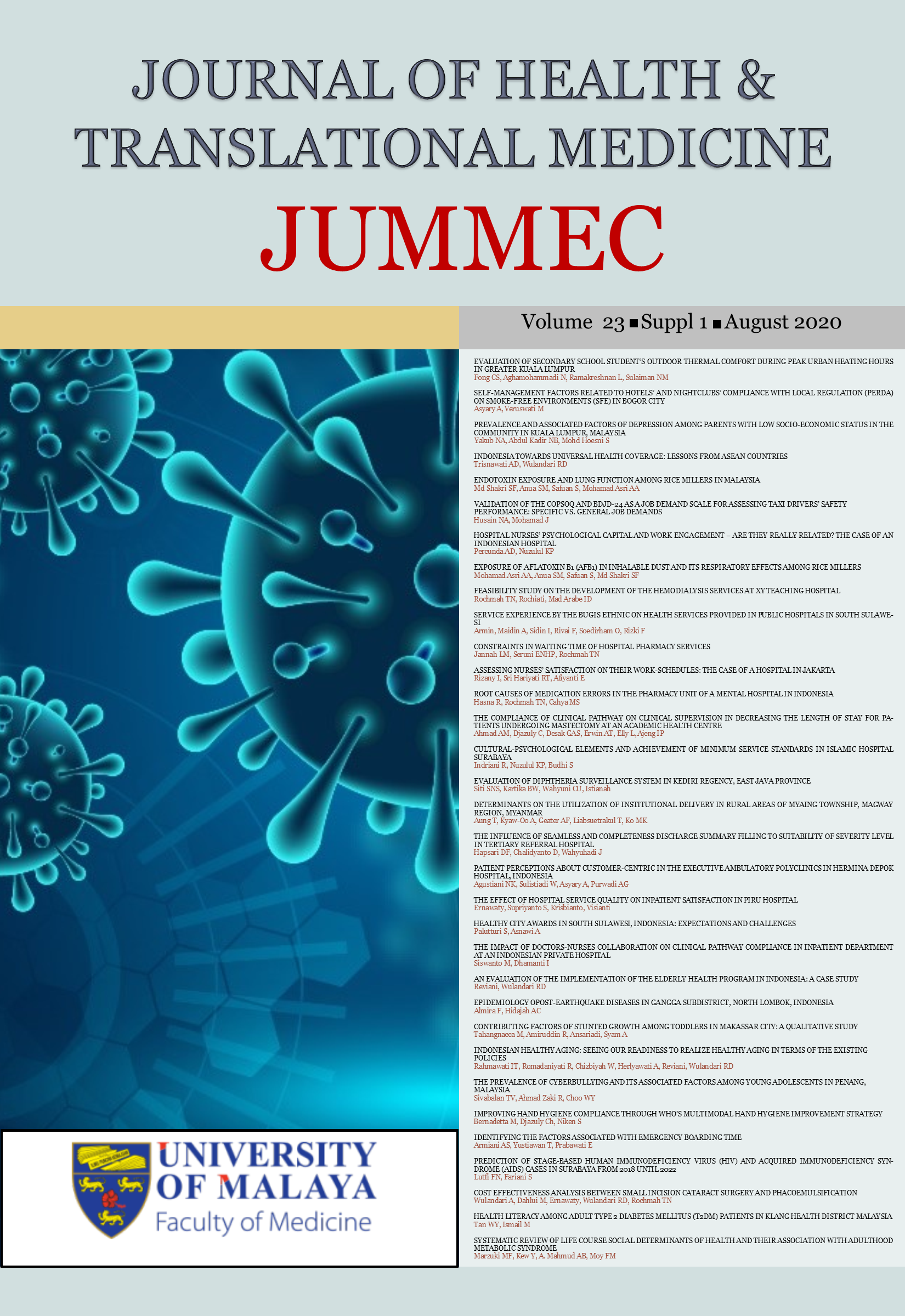FEASIBILITY STUDY ON THE DEVELOPMENT OF THE HEMODIALYSIS SERVICES AT XY TEACHING HOSPITAL
Keywords:
Feasibility study, Hemodialysis service, Teaching HospitalAbstract
Background: Despite new advancements, renal failure patients continue to require hemodialysis services or treatments in hospitals in Indonesia. Due to this, it is essential that hospitals consider offering this kind of services. Therefore, a thorough and accurate calculation is needed to examine the commercial feasibility of this treatment.
Objective: This study aims to conduct a feasibility study of the hemodialysis services for a teaching hospital.
Method: The feasibility study for the hemodialysis services has to be identified from a number of aspects such as lands for constructing the buildings, the infrastructure, human resources, equipment, and finance.
Results: Based on the forecasted calculation, it is estimated that the number of patients requiring regular hemodialysis in the said teaching hospital by the year 2027 would have risen to 59,727 and to cater to this need, an estimated number of 103 beds would be needed for such hemodialysis services. The feasibility analysis also indicated that the projected construction would require various kinds of investments such as land, infrastructure, and equipment for the hospital management’s information system, diverse communication system for internal and external services as well as training for service quality improvement. The calculation indicated that the investment would require US$2,790,567.51 to develop the XY Teaching Hospital.
Conclusion: Nevertheless, the feasibility study of the hemodialysis services also showed that there is a considerable potential for developing the hemodialysis services in XY Teaching Hospital.
Downloads
Downloads
Published
Issue
Section
License
All authors agree that the article, if editorially accepted for publication, shall be licensed under the Creative Commons Attribution License 4.0 to allow others to freely access, copy and use research provided the author is correctly attributed, unless otherwise stated. All articles are available online without charge or other barriers to access. However, anyone wishing to reproduce large quantities of an article (250+) should inform the publisher. Any opinion expressed in the articles are those of the authors and do not reflect that of the University of Malaya, 50603 Kuala Lumpur, Malaysia.


